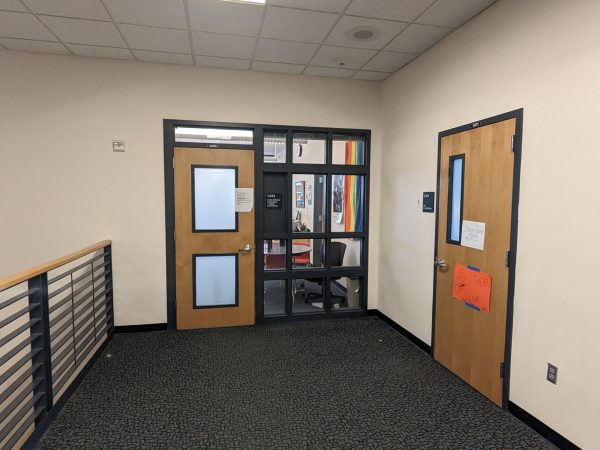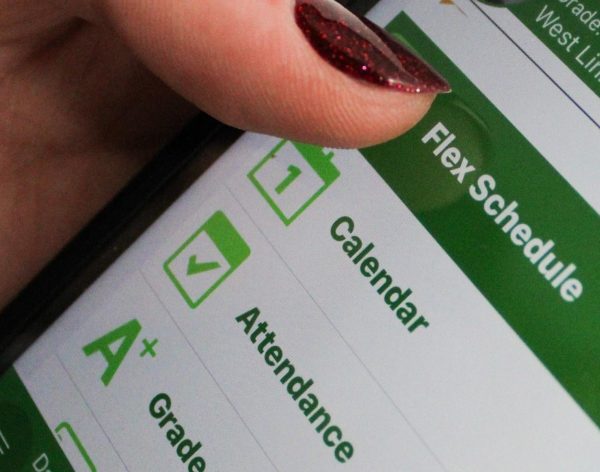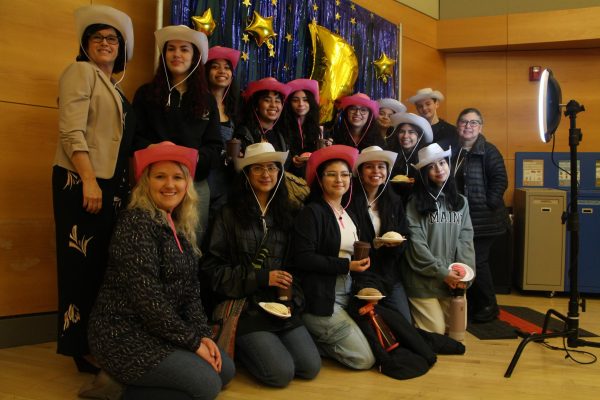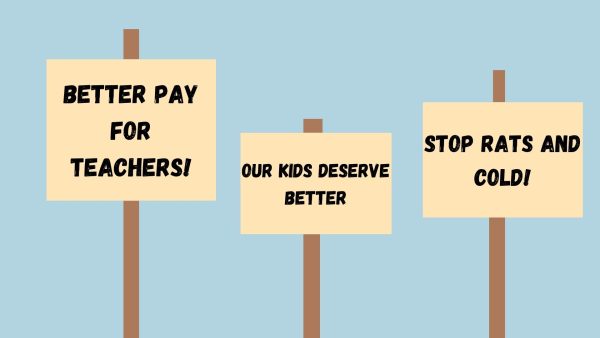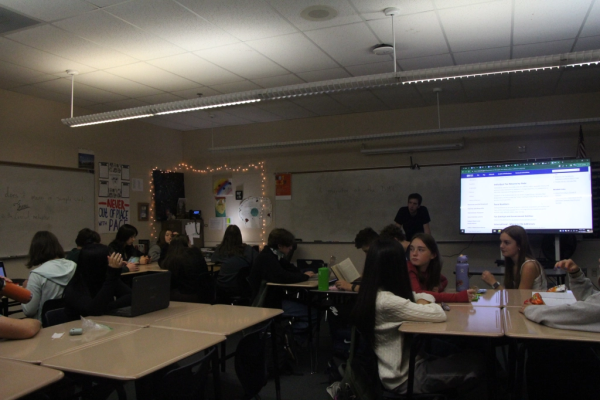Graduation requirements add pressure for taking electives
Portfolios of Art III students cover the hallway as students look to finish the year-long elective course. With only 24 semester openings in a high school career and 24 required credits for graduation, students like Maddy Gross, sophomore, had to take summer school to free time in her schedule to fit in art classes.
With the end of the school year quickly approaching, students are left thinking about their next year in terms of the classes they want to take, and how they want their schedule to look, although for some students, graduation requirements and course opportunities don’t line up.
The forecasting list for electives incorporates a variety of different interests, meaning that the only thing keeping students from taking these classes are the other graduation requirements they need to fill. Even with the options of summer school and early bird classes, many students still struggle to take the classes that they enjoy the most.
Taking six classes every year will allow for students to have their 24 credits by the end of senior year. However, this often becomes difficult for many students if they start to fall the slightest bit behind. Failing even one class will likely result in having to take credit recovery courses over the summer, which isn’t an option for some students due to time, transportation or cost.
There are currently 185 students eligible for free and reduced lunch, according to the Oregon Department of Education research project. For these students, the $100 to $200 cost of summer school may be the cause for them not being able to utilize those out of school opportunities.
“Credit recovery classes during school don’t cost anything.” Principal Kevin Mills said. “Credit recovery in summer does have a fee because you have to pay for the summer hours.”
For some students, this fee can be part of the reason that they can’t take electives. With no way to catch up or get ahead over the summer, students are then forced to try to fit all of their credits into the regular school day, which can be extremely difficult with their other classes.
“But with anything that we offer that has some sort of fee, there’s always scholarship opportunities,” Mills said. “And if there’s situations where students can’t afford that, we would be sure to support them so that they’re getting what they need.”
Scholarships can help eliminate the possibility of costs being an issue when deciding whether or not to take summer school, although transportation to and from these classes often remains a barrier.
“We’re floating some options of possibly adding some credit recovery after school.” Mills said, “And possibly some proficiency credit that would then have a bus to get kids home.”
Similar to the activity bus that was recently added, this bus would help to transport students to and from their classes, which can open up the opportunity of getting credits taken care of outside of the school day.
That then leaves more time for students to take electives and pursue their interests outside of their regular core classes.
For students involved with special education programs, fitting electives into their schedule becomes even harder. Along with incorporating all of their required classes, they also often take achievement center for one of their six periods. This makes it difficult to take electives, unless they choose to do so out of the regular school day. These early bird, summer school and after school classes act to help with that by leaving the option of taking credits outside of the school day, and therefore, allowing them more electives.
While summer school is traditionally seen as a way to catch up, it can also be used as a way to get ahead.
“I technically only have to take two classes next year.” Grace Maher, junior, said. “I’m still taking five so I can play tennis.” Maher took summer school classes throughout her first three years in high school, meaning that she will have more freedom in her schedule for senior year.
“If you take care of most of your credits early on, it makes it really easy later,” Maher said.
While it may not be ideal to miss the chance of sleeping in over break, summer school and early bird classes can help relieve the stress that students typically experience later on.
However, these classes do have limited space and are simply not an option for some students. With only 24 hours in a day, there often doesn’t seem to be enough time for them to take classes outside of school, while still finding away to keep up with other responsibilities and school work.
An eight-period school day could give these students a solution. Two extra periods would allow for more electives, along with more opportunities to pursue interests. It would eliminate cost and transportation problems that many students experience with summer school and early bird classes, giving all students the equal chance at taking electives.
It may seem like a burden to keep track of even more assignments, but a changed schedule could offer stress relief and increased opportunities to explore interests, to all students.
Your donation will support the student journalists of West Linn High School. Your contribution will allow us to continue to produce quality content by purchasing equipment, software, and continuing to host our website on School Newspapers Online (SNO).

Captivated by the art of storytelling, Skylar Moore, senior, joined journalism her freshman year as a way to explore her love for writing. Now going on...

























![Game, set, and match. Corbin Atchley, sophomore, high fives Sanam Sidhu, freshman, after a rally with other club members. “I just joined [the club],” Sidhu said. “[I heard about it] on Instagram, they always post about it, I’ve been wanting to come. My parents used to play [net sports] too and they taught us, and then I learned from my brother.”](https://wlhsnow.com/wp-content/uploads/2024/03/MG_7715-2-1200x800.jpg)
![At the bottom of the third inning, the Lions are still scoreless. Rowe stands at home plate, preparing to bat, while Vandenbrink stands off to the side as the next batter up. Despite having the bases loaded, the team was unable to score any runs. “It’s just the beginning of the season. We’re just going to be playing out best by June, [and] that’s where champions are,” Rowe said.](https://wlhsnow.com/wp-content/uploads/2024/03/IMG_3077-1200x900.jpg)





![The teams prepare to start another play with just a few minutes left in the first half. The Lions were in the lead at halftime with a score of 27-0. At half time, the team went back to the locker rooms. “[We ate] orange slices,” Malos said. “[Then] our team came out and got the win.”](https://wlhsnow.com/wp-content/uploads/2023/10/IMG_2385-1200x800.jpg)









































































